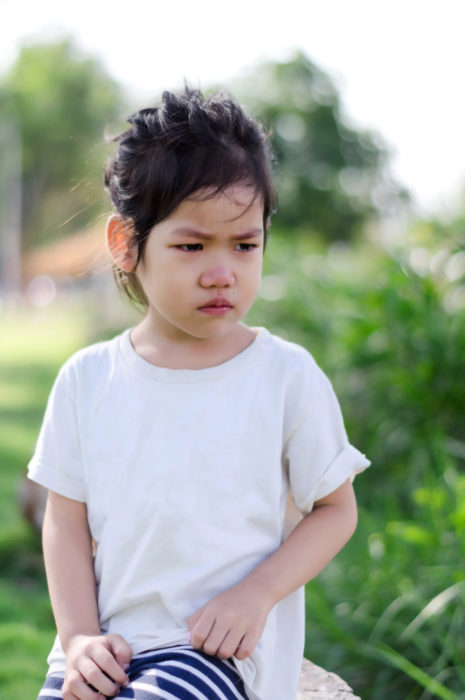What is Hand in Hand Parenting?: Day 4
![]() Understandably, parents often become annoyed by crying and use all kinds of strategies to hush their child up. In my family, the stock threat was, “If you don’t stop your crying right now, I’ll give you something to cry about!” The policy was dead straight: “No crying when I say no crying.” It was backed by a spanking.
Understandably, parents often become annoyed by crying and use all kinds of strategies to hush their child up. In my family, the stock threat was, “If you don’t stop your crying right now, I’ll give you something to cry about!” The policy was dead straight: “No crying when I say no crying.” It was backed by a spanking.
Other parents might simply judge whether the reason for the crying seemed valid, and if not, a scolding would be in order. On the more lenient end of the spectrum, parents try to rock, jiggle, or hold their child until the crying stops. Then there’s the old standby: put her in Time Out. Or talk to her at length about why her crying doesn’t make sense. There’s one that’s actually palatable to children: distract the child with something fun to do or sweet to eat. And finally, the most expensive option: replace the wanted, lost, or unsatisfactory item in question, and call it a day.
if not, a scolding would be in order. On the more lenient end of the spectrum, parents try to rock, jiggle, or hold their child until the crying stops. Then there’s the old standby: put her in Time Out. Or talk to her at length about why her crying doesn’t make sense. There’s one that’s actually palatable to children: distract the child with something fun to do or sweet to eat. And finally, the most expensive option: replace the wanted, lost, or unsatisfactory item in question, and call it a day.
The problem is that none of these parenting tools works very well. With them, we struggle along, but there’s a lot of “same old” that we go through with our children day after day. Over the years, we get worn down.
Staylistening is unique because you go with your child’s natural instinct to cry, to tantrum, and to have screaming, fearful fits. Why? Because it helps the two of you connect, and then she can think!
This single change—welcoming and supporting your child’s big, showy feelings—can make an enormous difference for both you and your child. Your child will begin to sleep better, eat better, wait her turn, play better with her siblings, and overcome difficulties big and small. You need not resort to the old-school tools.
Staylistening means listening all the way through your child’s upset.
You meet your crying child with an open heart, and stay with her until she recovers. Staylistening will give you the power to build your child’s resilience. Your listening will help her bounce back after a hard knock: when the dog has shredded her new ladybug purse; when her friend says she wants to play with someone else today; when she falls off her bike and doesn’t want to climb back on. Staylistening will also gradually deflate those tiresome daily disputes that eat away at your peace of mind.
When you Staylisten, you will move away from fixing things: instead, you will trust your child to recover and figure things out. You will move away from lecturing: you’ll assist your child as she clears away her upset, and functions better than before. You’ll listen because it’s connective, and lets your child know you care. You’ll find that listening is a powerful remedy when your child cries, has a tantrum, or is frantic with fear.
Finally, when you Staylisten, you operate under a fresh definition of misbehavior. Hitting, hurting, grabbing, defiance, and sneaking candy from the cupboard all still qualify as behaviors that warrant limits. But crying, tantrums, and saying awful things in the midst of getting rid of negative feelings get a free ride out of the misbehavior bucket. They have a shiny new bucket of their own. It’s labeled, “Healing Process. Just Add Listening.” That’s where you come in…
From the Hand in Hand Toolbox:
Read day five in this series: What is Playlistening? or get all the posts in this series about the Five Tools that will Transform Your Parenting
- Read about Staylistening in action: Staylistening Helps Pave The Way Emotionally for A New Sibling and Staylistening Through Swimming and Separation Fears
- This post is taken from the book Listen: Five Simple Tools To Meet Your Everyday Parenting Challenges by Patty Wipfler and Tosha Schore.
Discover the science behind your child's tantrums and upsets
Join our free class now and find out how science says parenting with connection helps you raise kind, compassionate children, without punishments, bribing or consequences. Take our free class today.

